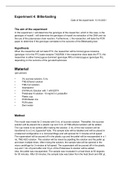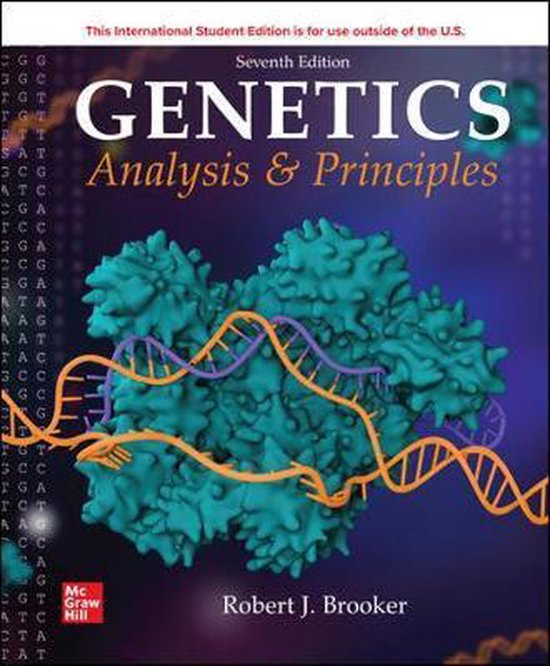Experiment 4: Bittertasting
Date of the experiment: 13-10-2021
The aim of the experiment
In this experiment, I will determine the genotype of the researcher, which in this case, is the
genotype of myself. I will determine the genotype of myself via extraction of the DNA and via
the use of the polymerase chain reaction. Furthermore, I, the researcher, will taste the PCR
paper to determine if the genotype correlates to the outcome of the Bittertasting test.
Hypothesis
When the researcher will not taste PTC, the researcher will be homozygous recessive
(genotype rr) for the PTC-taste receptor TAS2R38. If the researcher does taste the PTC, the
researcher is either homozygous dominant (genotype RR) or heterozygous (genotype Rr),
depending on the outcome of the gel electrophoresis.
Material
(per person)
• 3% sucrose solution, 5 mL
• TNE-Ethanol solution
• TNE-H2O solution
• Isopropanol
• 8 M NH4Ac Solution with 1 mM EDTA
• Proteinase K solution: 10 mg/ml in Lysisbuffer
• Plastic cup
• PCR Master mix
• PCR tubes
• Demi water
Method
The mouth was rinsed for 2 minutes with 5 mL of sucrose solution. Thereafter, the sucrose
solution will be placed into a plastic cup and 3 mL of TNE-ethanol solution will be added.
The cup needs to be swirled after making the solution. 2 mL of the new solution will be
transferred to a 2 mL Eppendorf tube. The sample tube will be labelled and will be placed in
a balanced configuration in a microcentrifuge and will spinned for 3 minutes at full speed.
The supernatant will be poured off in the plastic cup and the pellet will be resuspended in a 1
mL TNE-H2O solution. This solution will be mixed by pipetting the solution and the pellet up
and down multiple times. After mixing the solution, the sample tube will be spinned in the
micro centrifuge for 3 minutes at full speed. The supernatant will be poured off in the plastic
cup and 1 mL of lysis buffer and 10 µL of the Proteinase K solution will be added.
Also, the pellet was resuspended. The sample was incubated in a heat block at 55 degrees
for 30 minutes. After 30 minutes, the sample tube was taken from the heat block and 450 µL
, of 8 M NH4Ac solution was added to precipitate the proteins. Once again, the sample will be
mixed efficiently at full speed for 10 minutes. Then, 1000 µL of the supernatant will be
transferred to a new 2 mL tube and 600 µl of isopropanol will be added to the tube. The tube
will be shaken a couple of times.
Furthermore, the samples will be spinned for five minutes and the supernatant will be
discarded. Also, 1 mL of 70% of the ethanol will be added to clean the pellet of DNA. The
sample will be spinned once more at full speed for five minutes. The pellet will be dissolved
in 100 µl of demi H20. In the end, the supernatant will be discarded and the tube will be
airdried for 5 minutes.
Component μL Notes
2x KOD 12.5 Mastermix with buffer and
dNTPs.
FW RV 2 FW and RV primer.
DNA 2 My purified DNA.
Water 10
Table 1.1 The first mixture in μL that was made in a PCR-tube.
note: The tips of the pipette were changed between every different solution.
Component μL
PCR 10
10x buffer 3
HaeIII 2
Water Up to 30
Table 1.2 The second mixture in μL.
Results
I, the researcher, did not taste the PCR-paper. In the gel electrophoresis, one band of the
same size was shown of the undigested PCR product, which means that the researcher is
homozygous recessive (genotype rr). In the gel elelctrophoresis, the second band is the
result of the experiment that I have done. The fragment size corresponds with the line that is
parallel to the line on the ladder, corresponding with approximately 200 base pairs.This
corresponds with my hypothesis and the fact that the researcher did not taste the PCR-
paper as well.






